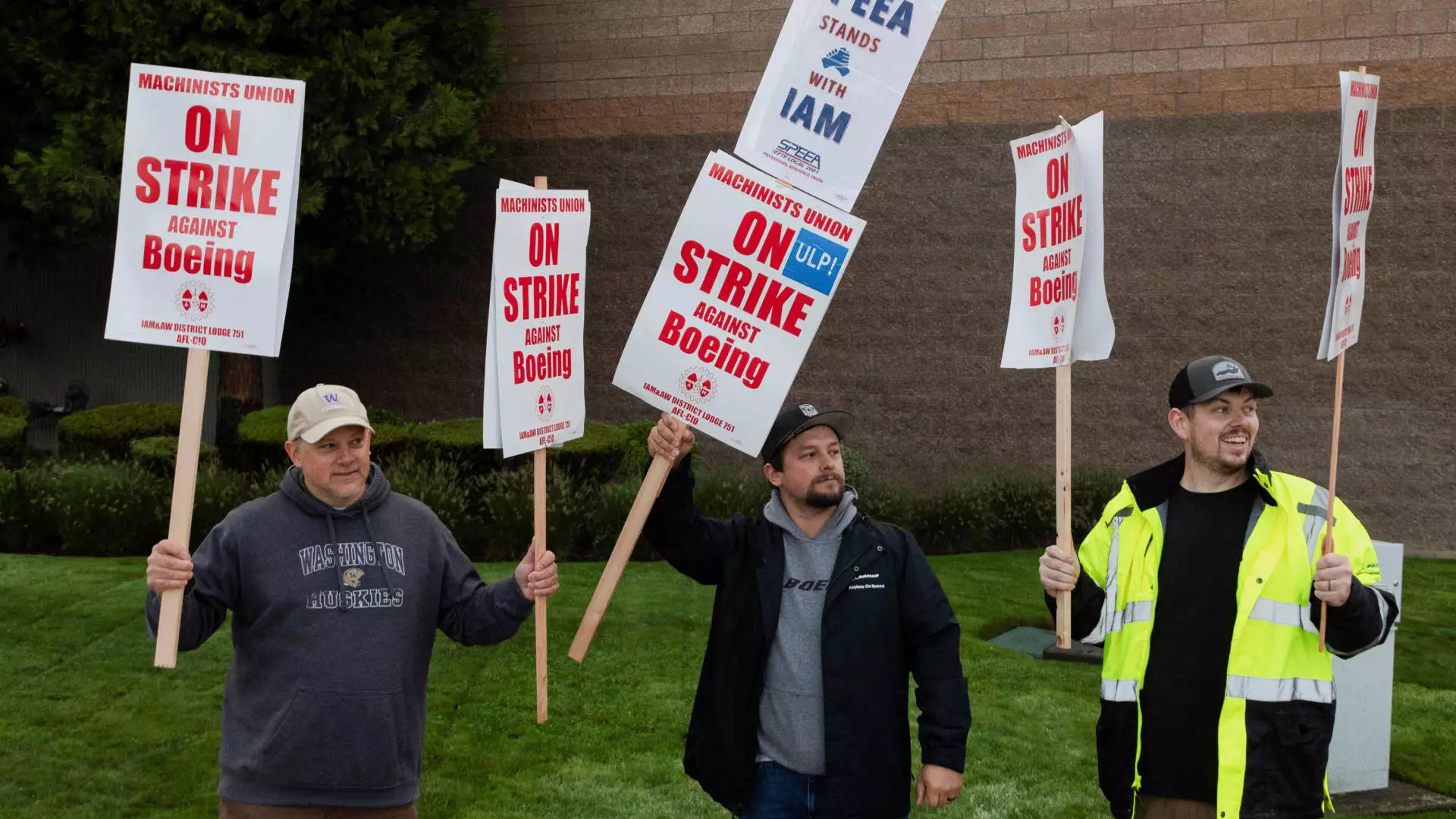The labor strike recently initiated by Boeing’s factory workers marks a significant moment for the aerospace giant. As of early Friday morning, overwhelming opposition to a new labor contract has forced pivotal employees to walk off their jobs, raising alarms regarding Boeing’s ability to meet production expectations and maintain its recovery trajectory. From the outset, Boeing’s Chief Financial Officer, Brian West, expressed the company’s concerns about the strike’s implications on aircraft deliveries, notably for its flagship 737 Max models. This situation embodies a more profound struggle: the balancing act between corporate recovery and labor rights.
The ramifications of this labor strike are set to ripple throughout Boeing’s entire production line. West stated that the strike will inevitably hinder production and jeopardize ongoing recovery efforts. He identified the 737 Max—one of Boeing’s best-selling aircraft—as potentially facing significant delivery delays. Financial analysts have started voicing their apprehensions, with Jefferies aerospace analyst Sheila Kahyaoglu estimating that a month-long strike could result in a staggering $1.5 billion shortfall for the company.
Furthermore, Boeing’s stock has reacted unfavorably to the developments, plunging nearly 4% shortly after the strike began. Credit rating agencies like Moody’s and Fitch Ratings have also taken notice, placing Boeing’s credit ratings under review. This cautious outlook from financial experts could further compound Boeing’s challenges by increasing borrowing costs amidst an already substantial debt burden. It is a precarious moment that underscores the nexus between operational disruptions and financial risks in a competitive industry.
Delving into the workers’ perspective reveals a stark frustration with the initial agreement proposed by Boeing. The offer, which included a 25% wage increase over four years, fell short of the 40% raises sought by many employees who argued that even this figure did not adequately address the rising cost of living. The overwhelming rejection of the contract—94.6%—highlights a substantial disconnect between the company’s management and its workforce. The workers’ motivations stemmed from a desire not just for financial compensation but also for a more comprehensive acknowledgment of their contributions to Boeing’s success.
The workers’ call for a strike reflects a robust tradition of labor activism, reminiscent of previous work stoppages in the aerospace sector. Despite Boeing’s longstanding history, the current labor unrest signals a potential turning point in employee relations, compelling the company to reassess its negotiation strategies and overall corporate culture.
The challenges Boeing faces extend beyond just labor disputes. The aerospace industry has been grappling with various quality control issues and safety crises in recent years, which have damaged public and investor trust. An example is the recent door plug blowout on a Boeing 737 Max 9 that drew scrutiny from the Federal Aviation Administration (FAA), leading to increased inspections and halts on production escalation. These ongoing dilemmas magnify the urgency for Boeing to manage both labor relations and safety standards effectively.
A prolonged strike could exacerbate existing vulnerabilities, delaying recovery efforts and diminishing Boeing’s market position. The production disruptions could hinder Boeing’s ability to compete effectively with rivals, especially in a landscape still reeling from the aftermath of the pandemic and global supply chain difficulties. Therefore, resolving the labor dispute amicably will be crucial for the company’s road ahead.
Given these complexities, Boeing’s invocation of a “laser-like focus” on cash conservation and rebuilding relations with the union speaks to the necessity of strategic maneuvering. The company is at a crossroads; only by engaging constructively with its workforce can it hope to navigate this turbulent period successfully. It is imperative for both parties to return to negotiations with a willingness to compromise, ensuring that the ultimate agreement promotes not only economic stability for the company but also fair treatment of its workforce.
The unfolding events symbolizing labor unrest at Boeing encapsulate broader tension within the aerospace sector. As the company battles internal and external pressures, the potential for a viable resolution lies in finding common ground that can safeguard both its production objectives and employee interests. The next crucial steps will define not just the immediate outcomes but also the long-term sustainability of one of America’s aerospace pillars.

